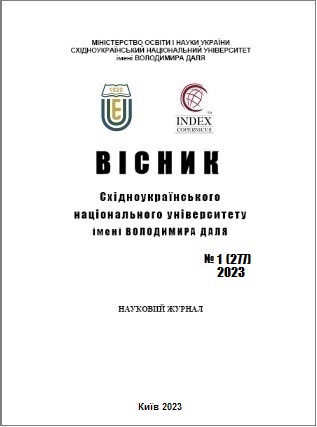Аxonometric transformations of a complex drawing
DOI:
https://doi.org/10.33216/1998-7927-2023-277-1-43-47Keywords:
circle, axonometric projection, ellipse, plane of general position, orthogonal coordinate system, axisAbstract
When drawing up technical drawings, it is sometimes necessary to have visual representations along with images of objects in the orthogonal projection system. For such images, the method of axonometric projection is used (axonometry is a Greek word, literally translated as measurement along the axes; axon means axis, metreo means measuring). The essence of the axonometric projection method: an object, together with the axes of rectangular coordinates to which it is assigned in space, is projected onto a certain plane so that none of its coordinate axes is projected onto it at a point. In this case, the object itself is projected onto this projection plane in three dimensions. In this case, the dimensions of the object in axonometric projections along all three axes are distorted. The change in linear dimensions along the axes is characterized by the distortion indices (coefficients) along the axes. The distortion index is the ratio of the length of a segment on the axonometric axis to the length of the same segment on the corresponding axis of the rectangular coordinate system in space. The purpose of this paper is to construct an axonometric projection of a circle located in the plane of general position using classical methods of descriptive geometry - methods of transforming a complex drawing. Axonometry stands alone in descriptive geometry, which is due to the theoretical multitude of approaches in which the coordinate system is a model of geometric space. Certain difficulties in mastering axonometry are related not only to this but also to its insufficient methodological support. Thus, in the definition of axonometric projection, the standards do not contain key phrases about the orientation of the object and the associated coordinate system relative to the projection direction, which should not be parallel to any coordinate axis. There is no clarity about axonometric planes, their location relative to the main planes in rectangular projection. The article describes a method for constructing an axonometric projection of a circle located in the plane of general position relative to the planes formed by axonometric axes. An example of constructing an ellipse - a projection of a circle for a projecting plane - is given, which can be extended to the conditions of the plane of general position without fundamental changes. The proposed article can be recommended for students who study descriptive geometry and engineering graphics courses in depth, and can also be useful for young teachers as a supportive material in working with students.
References
1. Hlazunov E. A., Chetverukhyn N. F. Akso-nometryia, M.: HTHL, 1953. 293 s.
2. Hordon V. O., Sementsov-Ohyevskyi M. A. Kurs nachertatelnoi heometryy. M.: Nauka, 1988. 272s.
3. Klymukhyn A. H. Nachertatelnaia heomet-ryia. Uchebnyk dlia vuzov. M.: Stroiyzdat, 1973. 368 s.
4. Frolov S. A. Nachertatelnaia heometryia: Uchebnyk vtuzov. M. :Mashynostroenye, 1978. 240 s.
5. Bubennykov A. V., Hromov M. Ya. Nacherta-telnaia heometryia uchebnyk dlia vuzov. M.: Vys-shaia shkola, 1973. 416 s.
6. Khmelenko O. S. Narysna heometriia. Pid-ruchnyk. K. : Kondor, 2008 r. 440 s.

